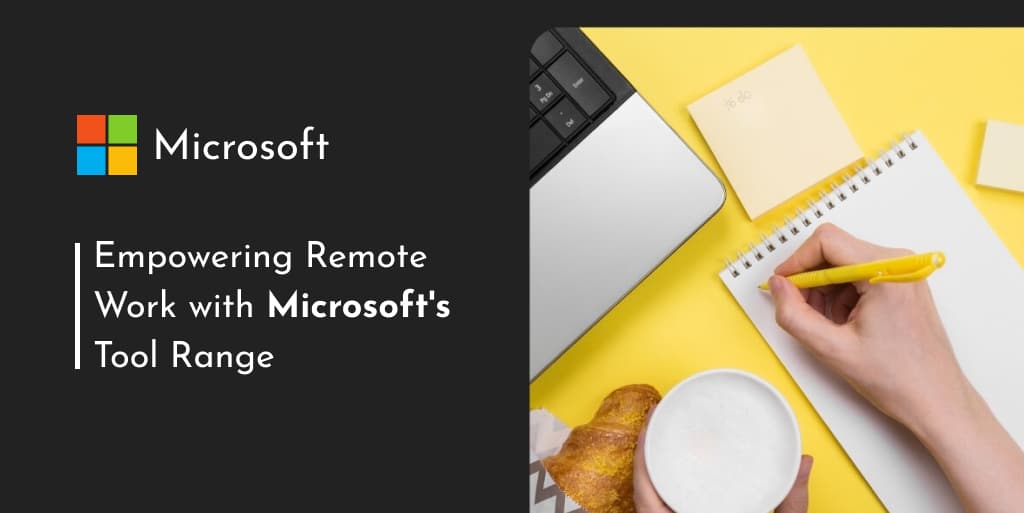The Shift to Remote Work
Pre-pandemic era
Before the global health crisis, remote work was seen as a perk offered by a few progressive companies. The traditional office setting was the norm, with daily commutes and face-to-face meetings defining the workday.
The benefits of remote work
However, as the world was forced to adapt, we witnessed the advantages of remote working models firsthand: increased flexibility, better work-life balance, and a broader talent pool for employers, to name just a few.
Microsoft’s Role in Empowering Remote Work
Microsoft Teams: The Game Changer
Enter Microsoft Teams. What Zoom did for video conferencing, Teams did for entire workplaces. It became the digital substitute for the office, offering chat, meetings, calls, and collaboration. Think of it like this: if remote work were a sport, Teams would be the playing field, the ball, and the scoreboard combined.
Integrating with Office 365
Seamless collaboration
The beauty of Teams is its deep integration with Office 365. With tools like Word, Excel, and PowerPoint built right in, it’s like bringing a Swiss Army knife to a knife fight. Need to co-author a document? It’s just a click away.
Accessibility and flexibility
Whether you’re on a laptop in the Bahamas or using a mobile in Brooklyn, Office 365 ensures you stay connected. It’s like having a portable office in your pocket.
Advanced Security for Remote Workers
MFA and secure sign-ins
Security is paramount, especially with remote setups. With features like Multi-Factor Authentication (MFA) and secure sign-ins, Microsoft ensures that your data remains locked tighter than Fort Knox.
Data protection
Imagine a vault, but for your files. That’s how Microsoft protects them. With advanced encryption and compliance certifications, data safety is a top priority.
Enhancing Productivity with Microsoft’s Tools
Planner and To Do
Staying organized remotely can be like herding cats. Thankfully, with tools like Planner and To Do, Microsoft ensures tasks are tracked, and productivity isn’t just a buzzword. They act as your digital assistants, always ready, never late.
Power Automate
Ever wish you could clone yourself? Power Automate might be the closest thing. It automates repetitive tasks, ensuring you focus on what truly matters. Think of it as a digital conveyor belt for your workflow.
The Future of Remote Work with Microsoft
Hololens and Mixed Reality
The future isn’t just about being remote; it’s about blending realities. With tools like Hololens, Microsoft is pioneering in the mixed reality space, allowing collaboration in ways we can’t even fathom yet. It’s like Star Trek, but in real life.
Project Natick: Underwater datacenters
Believe it or not, Microsoft is exploring underwater datacenters. This project, named Natick, promises sustainable and efficient data storage solutions. Picture Atlantis, but for data!
Conclusion
Microsoft’s suite of tools has undeniably shaped and supported the remote work revolution. With continuous innovation and a commitment to user experience, they’ve not only embraced the future of work but are actively sculpting it.
FAQs
1. What is the main purpose of Microsoft Teams?
Microsoft Teams serves as a hub for teamwork, offering chat, meetings, calls, and integration with other Office 365 apps.
2. How does Microsoft ensure data protection for remote workers?
With features like MFA, secure sign-ins, advanced encryption, and compliance certifications, Microsoft offers robust data protection.
3. What is Power Automate used for?
Power Automate is a tool to automate repetitive tasks and streamline workflows, enhancing productivity.
4. How is Hololens changing the remote work landscape?
Hololens and mixed reality tools allow for a blend of virtual and physical interactions, paving the way for futuristic collaboration methods.
5. Why is Microsoft exploring underwater datacenters?
Project Natick aims to provide sustainable, efficient, and high-speed data storage solutions by harnessing the cooling benefits of underwater environments.

